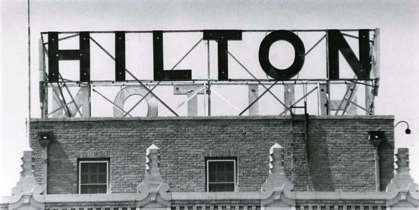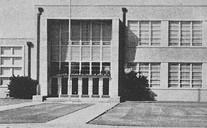The Plainview Hilton is deemed especially worth extreme care as its historic value is solid.
Taking Plainview back almost 100 years, the scene at the Hilton was one of original tradesmen laboring in the heart of the city in 1928-29 to build a strong brick hotel tower to house lodgers drawn by an economic boom that blossomed with the explosion of farming.
The lodging tower preceded the city's attempt a few years later to slug it out with Lubbock for the right to host the new Texas Tech College – a bout they lost and narrowly missed.
No worry, Plainview dusted itself off knowing it had a formidable institution, Wayland Baptist University, which grew in stature over 90 years to include multiple campuses around the nation and globe –serving the city in good stead spiritually, economically and otherwise.
Many other huge business developments followed – irrigation giant Green Machinery and Harvest Queen Mill were pioneers of the ag boom along with the city's airport complex. Later the city snagged Missouri Beef (later known as Excel and then Cargill), Wal-Mart Distribution Center, an Ethanol production plant, two state prisons and more. Cargill is now closed, but its campus was purchased by private investors for industrial sites.
At the dawn of 2018, the city learned it will soon see huge shipments of wind generators arriving at a 100-acre railhead east of the city, or passing through the town on flatbeds, as Excel Energy constructs one of the largest concentrations of wind powered electrical generation stations worldwide on farms in east and southwest Hale County.
So, in those times, from the 30s through the 60s, the experience of gazing upward toward the city's tallest structure and a newly reinstated flag flying atop, could again foster feelings of great things ahead, or it is hoped. And history repeats itself in a sense as a tall tower may again be symbolic of great expectations for Plainview.
This time Hilton's successors, MRE Capital partners, work to refit the Hilton's strong exterior. And the refurbished and modernized Hilton, its brick and stone façade clean and sparkling again, may earn the right to be symbolic of expectations again.
How the Hilton came to Plainview, according to an article by former Herald editor Doug McDonough, states that the town fathers learned from experience and were following a pattern they had successfully used to woo the railroad to Plainview. In early 1928 the city made an offer to Conrad Hilton he couldn't refuse.
Presented to Hilton personally by Guy Jacob, Herbert Dysart and A. Underwood, all of Plainview, the offer included free land for a hotel and $20,000 cash. Additionally, residents offered to purchase $20,000 of "7 percent preferred stock" in the hotel. Within days the land was deeded to Hilton and construction began Sept. 1, 1928. It was finished June 4, 1929, and dedicated July 4 of that year.
This shot of the Hilton from the early 1960s shows the eight-story building in all its regal glory. with a full-service restaurant the hotel hosted weekly service club meetings as well as banquets for the Chamber of Commerce and many other local organizations.
At one time outlined with neon tubes, large block letters spelling out Hilton Hotel graced the roof of the hotel at Sixth and Austin. They were permanently removed in the late 1980s when the building's ownership changed.
A richly appointed mezzanine greeted visitors to the Hilton during its heyday in the 1940s and 1950s. Note the wood-paneled telephone booth and heavily upholstered lounge chairs.
Read more about the Hilton by clicking here -- including a story about bootlegging -- what??? 


.jpg)

.jpg)










